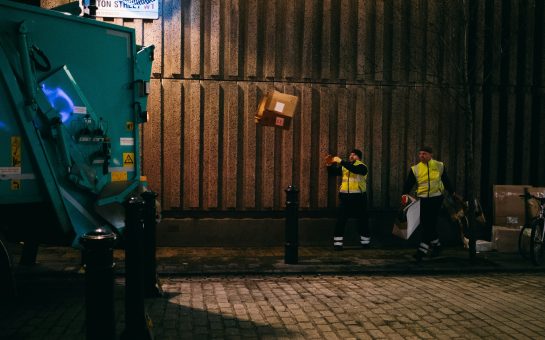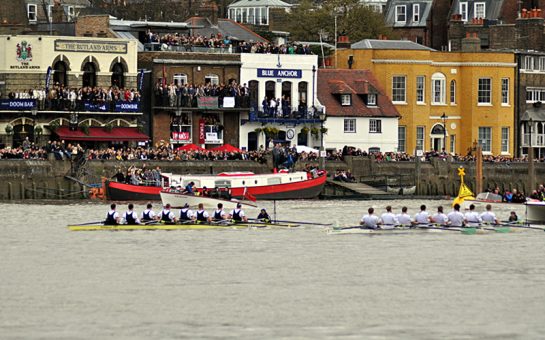For many Londoners, embarking on a nature walk would first mean hopping on a train in an attempt to escape the hustle and bustle.
Paul Wood is out to challenge this. The 50-year-old juggles his day job as a digital business consultant with leading urban forest walks around the capital, the next of which will take place in Pimlico later this month.
Trees are a particular source of fascination for Paul, who has enjoyed a lifelong love of the great outdoors after growing up in Dover.
“We had a wood behind our house, so I used to scamper off and consequently got to know about all the trees,” he said.
After publishing London’s Street Trees: A Field Guide to the Urban Forest in May last year, Paul took part in a series of very popular walks from bookshops for promotional purposes.
From this, the idea of doing regular urban walks was born, with the first of these taking place in September.
Routes already trodden include Fitzrovia to Bloomsbury and Haggerston to Hackney.
“London has a really great tree heritage, which is defined by things like the London plane, found all over town,” said Paul.
The exploration of Pimlico on Sunday 25 February has plenty for people to get their teeth into.
Moreton Terrace was the birthplace of former Australian Prime Minister Billy Hughes, who served during WW1 and was born in 1862.
“That street is now completely lined with Australian trees,” Paul observed.
“At one end is a mimosa, which has amazing yellow blossom. It’s a really, really striking tree, especially in winter.
“These are the types of things which make a route interesting.”
Australian Bottlebrush trees also populate the street, indicating that they were planted to recognise the contributions of their famous former resident.
Paul has been unable to corroborate this, but suspects it is not a coincidence.
The area’s trees provide an insight into the international make-up of London, with Chinese gingkos and Japanese zelkova also springing up around SW1V in the last 20 or 30 years.
“The great diversity of trees and species there are in the city completely reflect the great diversity of the population of London,” Paul said.
In an age when people seem so emotionally overwhelmed and plugged in to social media, such nature walks provide a vital (albeit brief) respite from the daily grind and have a number of obvious health benefits.
“There are a lot of studies that have been done that show the importance of green spaces to enable people’s mental health and wellbeing,” said Paul.
“I think there’s a correlation between how green your street is and how happy you are.”
One might expect the uptake on these walks to dip during the perishing winter months, but this is not the case.
“There’s interest throughout the year. There are all sorts of things beginning to stir, even though it’s winter,” said Paul.
“If I’m able to point out how you can understand that that’s an oak tree as opposed to something else, that seems to be something people are quite interested in.”
The subject of trees may seem relatively uncontentious, but people’s protective instincts can be very strong.
An ongoing dispute is raging in Sheffield after the city council enlisted a private contractor, Amey, to fell trees in the area which it deemed diseased, dying or dangerous.
Residents have questioned that reasoning, arguing that some of the trees are in rude health.
Campaigners against the felling stormed council buildings on Thursday evening, demanding that details of the £2.2bn PFI deal be disclosed.
“It’s become a real battleground. That will potentially be a cautionary tale for other local authorities that might be tempted to do the same thing,” Paul said.
“Funding cuts are the biggest threat facing the natural environment and particularly in urban environments, but conversely, there are a lot of people who are very passionate about preserving it.”
There are a wealth of beautiful open spaces in London, with Paul singling out one particular expanse just south of the Thames.
Paul said: “One of the places I would say is particularly interesting is Bonnington Square in Vauxhall. The people that have lived there over the last 30 years have planted a remarkable array of trees.
“It is like going into a little, green wonderland in the city. It would be quite an interesting model for how other places in London could green their streets if they chose to.”
Paul’s enthusiasm for a wide range of flora is infectious and he has been bowled over by the public reaction to his work.
“A lot of people have said to me: ‘It’s really interesting to see the city in a completely new way.’ It adds a new dimension,” he said.
“I’ve been pretty amazed by the reception people have been giving street trees since then. It’s very gratifying.”
For more information on the upcoming walk around Pimlico, visit eventbrite.
Image via flickr with thanks to Tim Green.




